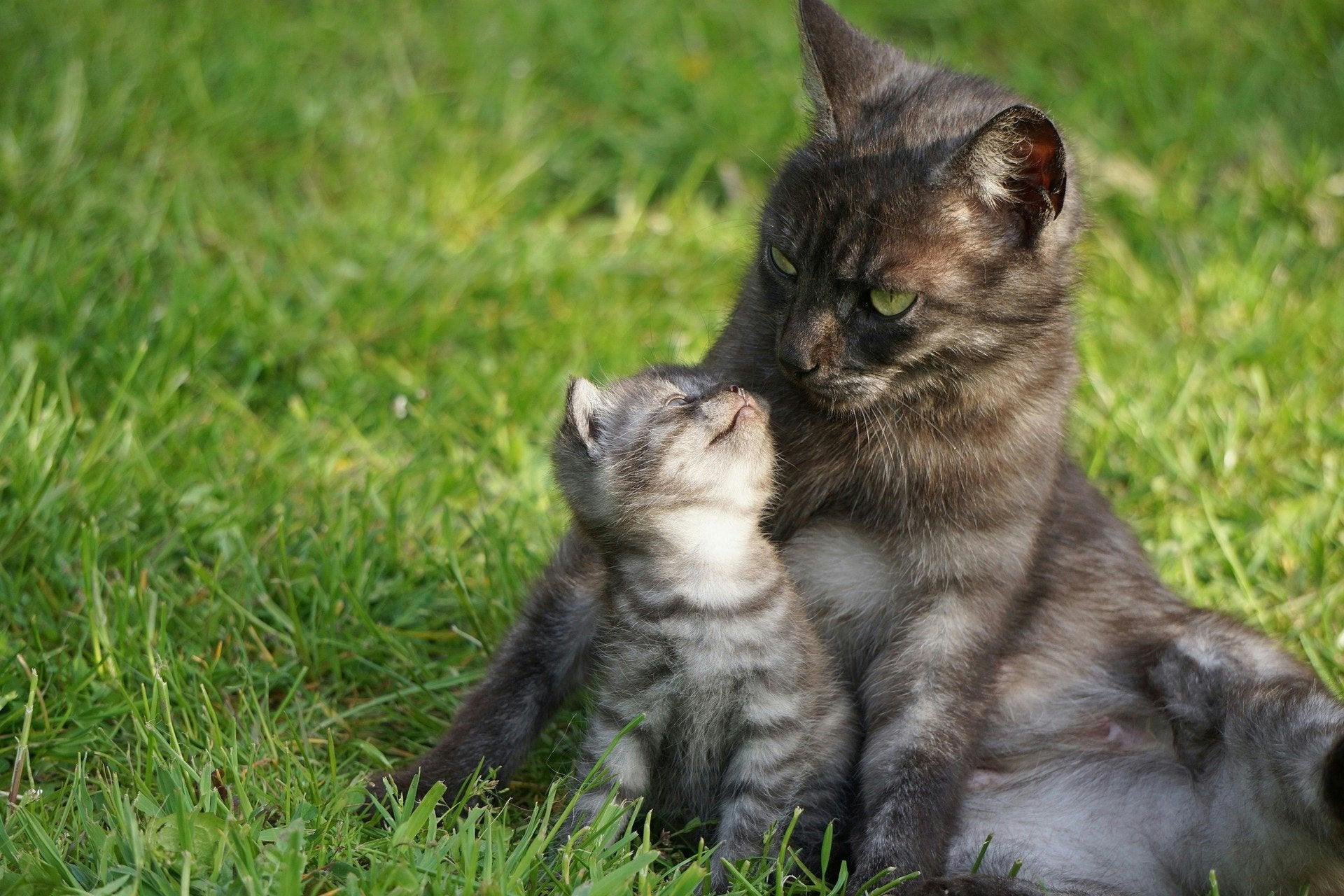Aww... little baby kittens! Having kittens is a wonderful experience for both you and your queen. But, before you can welcome new furry bundles into your home, you need to gather all the information you need about pregnancy in cats and appropriate care for your queen and her kittens. Here is what you need to know in order to support your expectant cat and her babies as well as you possibly can.
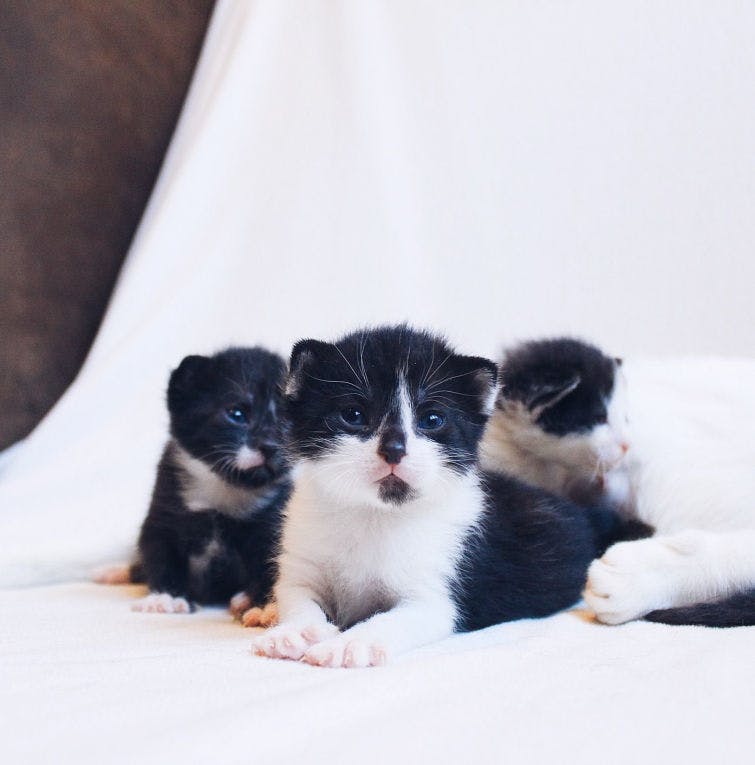
Background information
About feline reproduction
Female cats can have several periods of heat over the course of a year. The heat season starts in early spring and ends in late autumn. Each heat period lasts about 4 to 7 days and they occur every couple of weeks during the heat season. A female cat can mate with multiple males during the heat period. Males compete for the female and the winner gets the right to mate.
During the intercourse, females will make loud yowls as the male pulls out. This is because a male’s penis has a band of backward-pointed spines (about 1mm long) which rake the walls of the vagina during the intercourse in order to promote ovulation and clear the vagina of other sperm.
After the intercourse, a female will thoroughly clean her vulva and after 20 to 30 minutes she is ready for the next cycle. Ovulation may not always be triggered during the first intercourse, so conception may not occur with the first male with which females mate. However, because a female may mate with multiple partners, kittens in her litter may therefore have different fathers.
Because there are multiples opportunities for your cat to get pregnant, if you would like to avoid unexpected litters of furry bundles, neutering your queen before her first heat would be highly recommended.
About feline pregnancy
The implantation of the infant kittens occurs about 10-12 days after the conception. The gestation period on average lasts anywhere from 64 to 67 days. A female usually bears a litter of 3 to 5 kittens who are weaned at the age of 6 to 7 weeks old. Kittens can reach sexual maturity at the age of 5 to 10 months old.
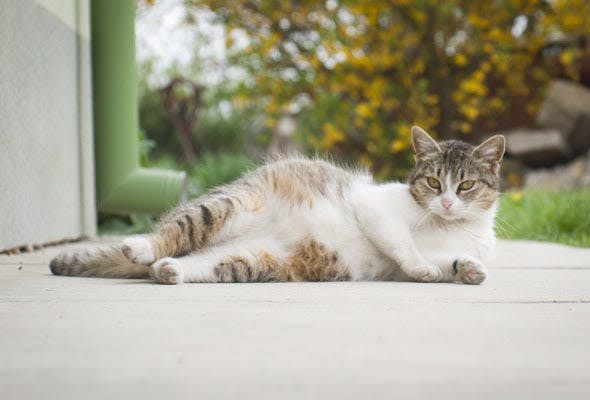
Pregnancy in cats
How to recognize a pregnant cat
Cats often don’t show any physical symptoms of pregnancy until they are already a few weeks into their terms. If you suspect your cat may be pregnant, it is highly recommendable to take her to the vet for the official diagnosis. Purina however, made a very comprehensive list of symptoms you may observe with your pregnant queen:
1. After approximately 15-18 days of a cat pregnancy, you may notice that your pet’s nipples become enlarged and red – this is known as ‘pinking-up’.
2. Similar to morning sickness in humans, your pregnant queen may go through a stage of vomiting. If you notice that her sickness becomes frequent, or she is at all unwell in any other way, contact your vet.
3. Your queen’s tummy will start to swell, but avoid touching it so you don't risk hurting mum or her unborn kittens. There can be other causes behind abdominal swelling, so monitor your cat closely for any signs of illness and consult your vet if you are worried.
4. A mum-to-be will gradually gain between 1-2 kg (depending on the number of kittens she is carrying) - this is a strong sign that she is pregnant.
5. Queens tend to have an increased appetite later in their pregnancy, which will also contribute towards her weight gain. An increased appetite could also be a sign of worms or illness, so double check with your vet to confirm.
6. Your pregnant cat may act more maternal, meaning that she purrs more and seeks extra fuss and attention from you.
7. Some vet practices can diagnose cat pregnancy using ultrasound, sometimes as early as 15 days into her term. The vet may also be able to give you an indication of how many kittens your cat is expecting by day 40 of her pregnancy. Bear in mind that in cat pregnancy, a larger kitten can obscure other smaller kittens in the womb, so you could have more kittens than expected!
How to recognize if your queen is going into labor
Right before giving birth, queens may become more vocal and agitated. Their body temperature may drop to around 37.8°C and they will often refuse food. Once your cat starts experiencing abdominal contractions, there will be some discharge from her vagina. Kittens usually follow very quickly after this.
Most feline labors go without complications and we don’t need to interfere. In case you notice weird signs such as dark or bloody discharge or mom straining without producing kittens, contact you vet immediately.
Caring for a pregnant cat
Although not very often, sometimes cats may experience “morning sickness” at the earliest stage of pregnancy. If this turns out to be consistent, contact your vet. She may also show signs of fatigue due to the hormonal changes. During pregnancy, you will need to increase the intake of calories for your queen.
”She’ll eat about 1.5 times her normal diet as her pregnancy draws to a close, so make sure she has constant access to her normal fare. Your vet will probably recommend that you feed your pregnant cat kitten food throughout her pregnancy and during the period she is nursing her young.” - explained the pet advisers on WebMD.
Always make sure that your queen is regularly vaccinated and treated against worms and other parasites during the pregnancy too. Do not forget to consult with your vet prior using any medications with a pregnant queen to make sure the treatment is safe for both her and her kittens. It is also recommended to vaccinate your cat prior to breeding as some vaccines may be harmful during pregnancy.
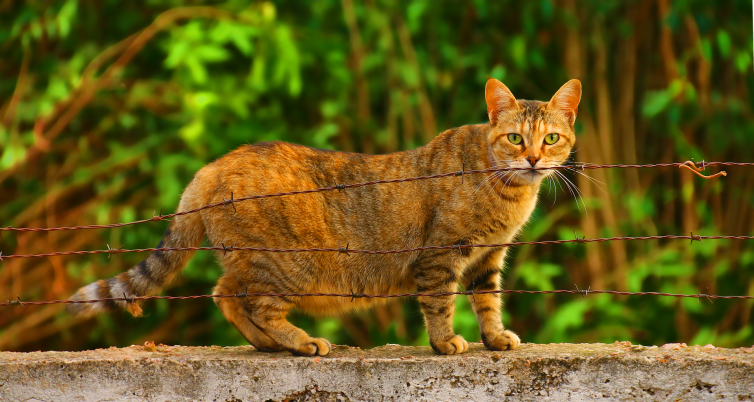
Pregnancy in cats
As the big day comes closer, you may want to reduce your kitty’s walkabouts as you wouldn’t want her going into labor while she’s outside. You will also want to make your home a comfortable and safe place for her to labor her bundles. Find a good, secluded spot for her and offer her a medium-sized box with a low opening.
You can cover it with newspapers and old towels or blankets to make it cozier for the new family. Make sure to put the nest in a quiet place where there is no traffic or noise so the cat would feel relaxed and safe. Despite all our efforts to create the ultimate nest though, sometimes our queens will choose another, often completely inconvenient place.
Please keep in mind that unless there are complications during the pregnancy and labor, we shouldn’t interfere with the queen’s process.
Kitten care
The big day has finally arrived and your home is enriched with the cutest furry bundles – kittens. Even the word is cute. Kittens are adorable and lovable, and they sneak their way into our hearts the moment they are born. But how well do we know these bundles of joy we are so bluntly in love with?
Luckily, during the very first weeks of kitten-hood, us mere humans are mostly supposed to just watch our queens perform her duties of raising her babies. But sometimes, they may need a little extra help from us though. This is if a kitten has been separated from the nest or the mother is rejecting one or more of the kittens, or simply when the queen isn’t producing enough milk for all of her litter. The most important things to keep in mind when it comes to taking care of kittens are food, warmth and socializing.
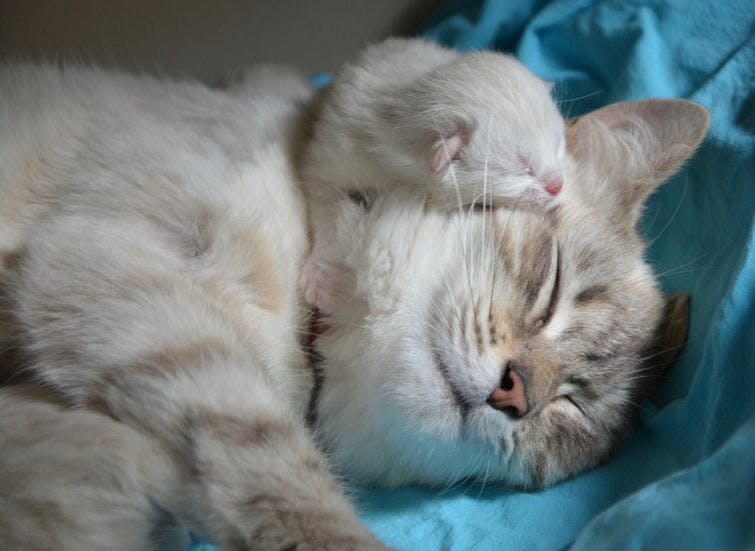
Queen with a kitten
What do kittens eat?
Kittens get everything they need during their first several weeks of life from their mom’s milk. This is why, if you’re taking care of an orphaned kitten, you should always first try to find a replacement mother cat for it.
A foster mom with a small litter may be able to nurse the orphaned kittens. Otherwise, you will have to bottle feed your kittens with commercial milk replacers. Don’t feed the kittens with cow’s milk as it is not easily digestible in cats of any age. Rather consult with the vet about the proper way of bottle-feeding orphaned kittens.
Besides milk, when the kittens reach 3 or 4 weeks of age, you can start introducing easily chewable diet such as a mixture of high-quality cat food with warm milk replacer formula. By the fifth week, kitten should be adjusted to this new diet. Already by the sixth week, they can chew and digest dry cat food. Usually, by the eighth week kittens are fully weaned.
How often and how much should I feed my kittens?
Newborns usually nurse every one to two hours. Kittens of six to twelve weeks of age should be fed about four times a day, and kittens of six months of age about three times a day. When it comes to calories, keep in mind that kittens require about three times more calories than adult cats. Kitten would should consist of at least 30% of proteins and needs to be specifically formulated for kittens.
What else do I need to keep in mind?
To learn more about kittens and their needs, we highly recommend reading this blog about kittens.
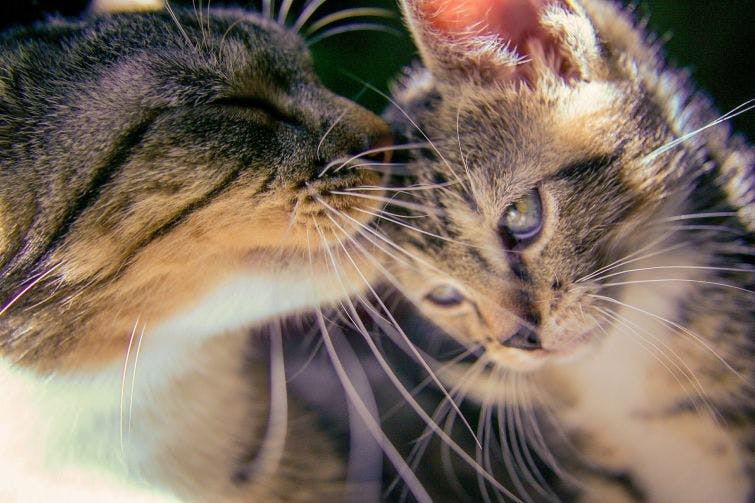
Other things to keep in mind
Fading kitten syndrome. In feline breeding, it is very important to keep blood group clashes in mind. If the mom’s blood type isn’t compatible with her kitten’s blood types, neonatal isoerythrolysis may occur and you can lose some kittens from the litter. To learn more about blood type system in cats and this very important issue in breeding please refer to this article.
Kittens always need to be handled gently. While you shouldn’t handle them too much at first not to disturb their mother’s raising process, you still need to appropriately socialize your kittens. However, keep in mind that rough or excessive handling of young kittens may lead to umbilical hernia.
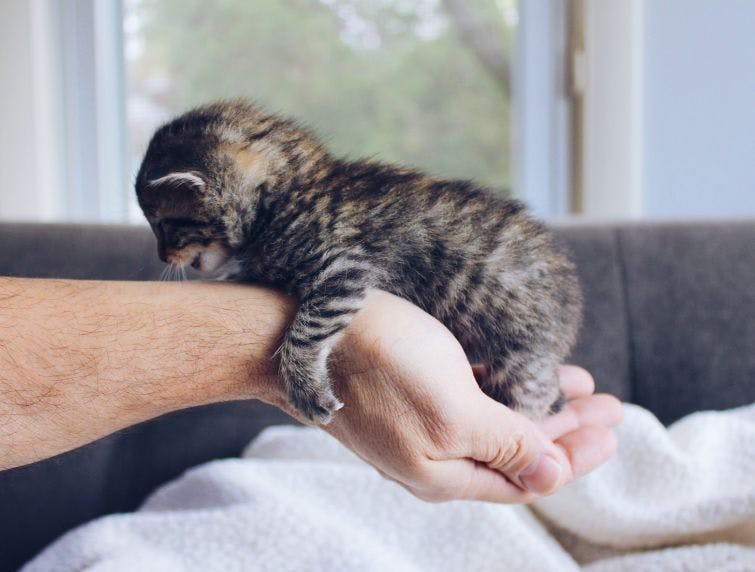
Are you expecting kittens or you recently took care of a litter? Share your experience with the rest of the Basepaws community to help others going through this wonderful process now!
